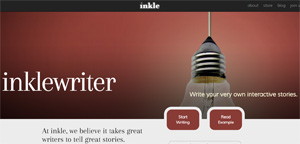In today’s world, the topic of using technology in the classroom can be intimidating. In this regular column, join one teacher on a quest to discover the best way to meet the needs of her digital-age learners, moving beyond the technology tools to focusing on supporting each student’s learning.
 For many of us, the school year is winding down. Memes about exhaustion dominate social media and checklists of end-of-year duties and tasks fill our email boxes. For teachers, students, and parents, it feels like a mad dash to the finish line in the school year marathon. How will we not just survive but thrive with our students until the last minute of the last day together?
For many of us, the school year is winding down. Memes about exhaustion dominate social media and checklists of end-of-year duties and tasks fill our email boxes. For teachers, students, and parents, it feels like a mad dash to the finish line in the school year marathon. How will we not just survive but thrive with our students until the last minute of the last day together?
In our classroom, my students and I designed one last engaging project as an opportunity to demonstrate mastery of many of their ELA content standards coupled with the International Society for Technology in Education Standards for Students.
In collaboration with the social studies classes which were creating decade projects for a living timeline of the time periods they studied this academic year, my students created “Choose Your Own Adventure” stories of historical fiction; each student was tasked with creating a story set in the decade they were working on in their social studies classes. With these stories, students had the ability to provide readers with an interactive reading experience. As an active character throughout the adventure, readers made choices along the way that shaped the final outcome of their story.
As a writer, students employed standards in informational text, research, citing textual evidence, and domain-specific vocabulary in conjunction with narrative writing. The complexity of this project challenged my writers as each student created multiple storylines to provide readers with an engaging reading experience.
This project required learners to understand writing organization. I created a graphic organizer to help them see the basic outline of a choose-your-own-adventure story. They created an opening scenario with two options from which the reader could choose. Each of those choices had two additional scenarios for the reader, and each of those choices concluded the story. As with everything else in our classroom, students could go beyond the expectations we set as a group if they were so inclined.
Students worked in Google Drive to create their outlines, curate historical information to weave into their narratives, create a bibliography, and write their drafts. In addition to these reading and writing standards, students agreed that they also wanted to hone their skills in providing specific actionable feedback to their peers. Through this feedback—comments on Google Drive—students were able to demonstrate the ability to analyze another’s writing and provide in-depth, specific suggestions on how the writer could improve his/her writing. As their teacher, I was impressed with the complexity of understanding students demonstrated and how they strove to help each peer publish their best possible project.
As challenging as these stories were for students to create, we wanted to find the best tool to publish (and showcase) their amazing projects. Enter inklewriter. This Web-based tool is designed specifically for this type of interactive story. The user interface was very intuitive for my learners to create links to continue the story for each choice a reader might make. My students set up using their district Google accounts.
It should be mentioned that inklewriter is currently in Beta. We did experience some glitches while the students were trying to publish. My students discovered they could usually log out and log back in or even move to a different device to continue their work.
The students enjoyed this project so much they couldn’t wait to share it. Inklewriter, like many tools today, provides a way to easily share stories across different tools and platforms. Students inserted links of their final projects into their Google Drive documents and their blogs. Then we designated a day in class just for sharing. We borrowed a Chromebook cart and each student opened his or her published stories. Learners rotated through the different stories around the classroom in what my students nicknamed “reading-go-round.”
They had a blast reading one another’s stories. Many of them expressed to me that this was their favorite project of the year. Was it complex? Yes. Did it challenge them? Absolutely. But the students never complained or lost focus. This gave them an avenue to apply what they’ve learned this year in a meaningful way for an authentic audience. It was the perfect end to a yearlong epic adventure of learning.
Wishing all the best as you end what I’m sure was an amazing adventure with your students!
Julie D. Ramsay is a National Board Certified Teacher and the author of “Can We Skip Lunch and Keep Writing?”: Collaborating in Class and Online, Grades 3–8. She teaches ELA to sixth graders at Rock Quarry Middle School in Tuscaloosa, AL. She also travels the country to speak, present, and facilitate workshops in applying technology to support authentic learning. Read her blog, eduflections.